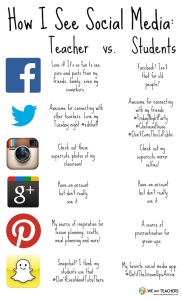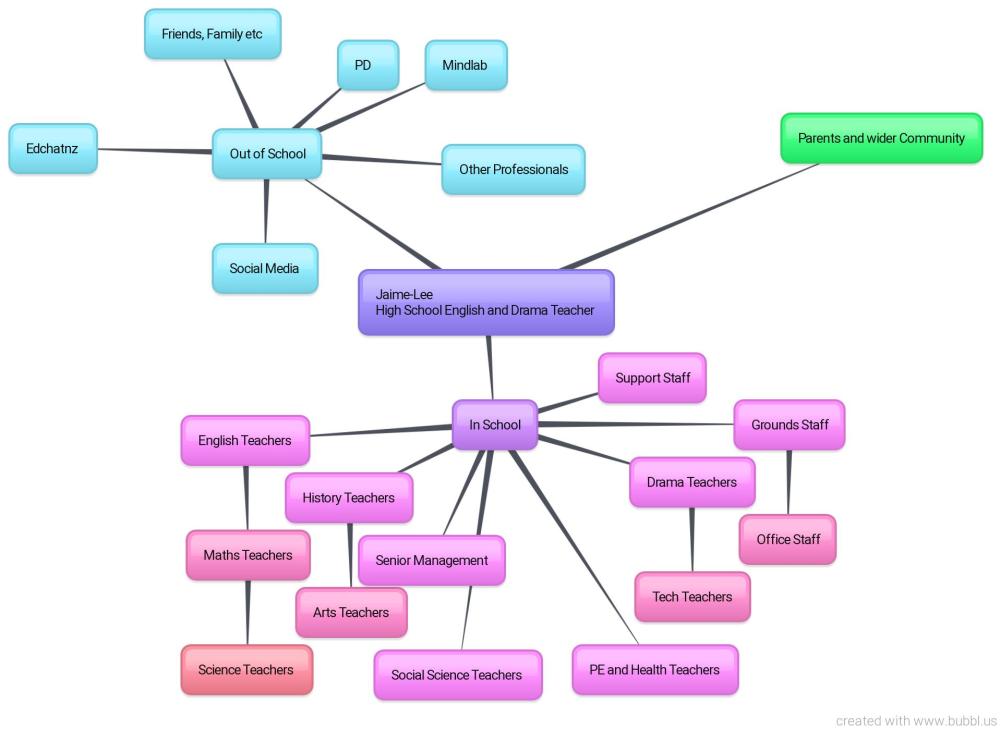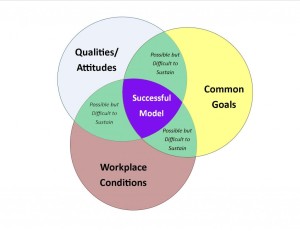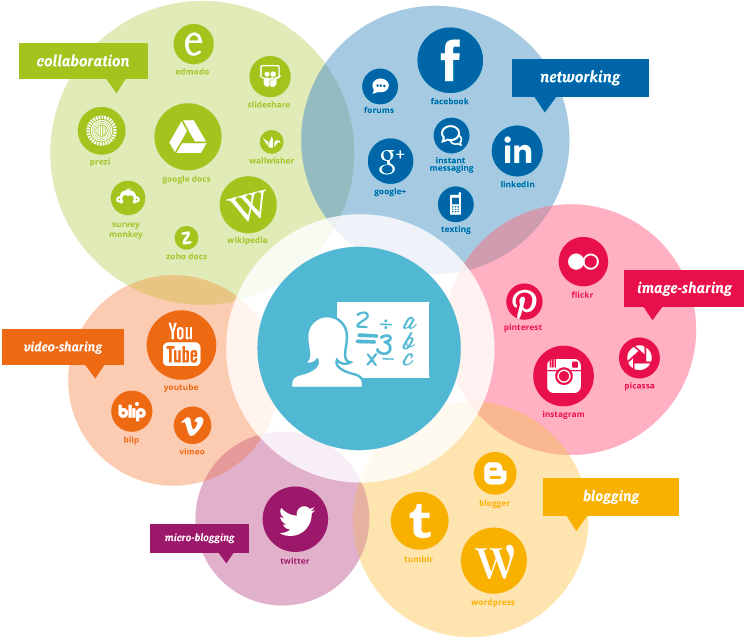For those long time readers you are probably aware that I spend a lot (maybe too much…) time on various social media networks. Twitter, Pinterest, Tumblr, TeacherPayTeacher, TES, Facebook, Instagram, Reddit. Heck, I still have a Livejournal or two. I have a teacher tumblr that I use to connect with teachers around the world and I have gained valuable feedback and resources. More importantly, I have gained support from people I have never met. As Melhuish mentions one of the main motivators for using social media networks is for “affirmation of practice, advice on experiences within the classroom, new resources, and mentorship.” (Melhuish, 2013, p39) And I have found that in abundance especially via my teacher tumblr.

Source: We Are Teachers
Social media is a tool, just like anything else, and I feel that many teachers and students forget this. It is just as easy for students to become distracted with pen and paper as it is with social media. That being said, there is a place for social media in teaching. It is a great way to connect with people in New Zealand and around the world. Twitter, for example, is useful for PD, especially #edchat and other hashtags. On tumblr I rely on #educhums and #education to connect with fellow teachers and find interesting ideas. And teacher memes.
I have had my students create mood boards on Pinterest and create character based Instagrams to great success. As Silius et al. (2010) argue social media can enhance study for students due to their motivation to use and engage with it. And I have seen that. But we must be careful not to use it as a quick fad. So we have to understand it.
The potential challenges are buy in, time management, and fear. Many teachers are still hesitant to connect online so they don’t. There is also the time management aspect. When using social media networking there is never a down moment because when you are sleeping teachers on the other side of the world are working. When do you switch off when social media is 24/7? Then there are risks in sharing any bit of information online and students view social media differently from teachers. Most teachers still remember a time where we did not have internet or we had dial up. Students have powerful computers in their pocket and are keeping up with a range of things that we may view as trivial but are important to them. And they can find information quickly if they are truly engaged and interested in a topic.
I think the biggest challenge is how and why it is being used. Is it a distraction from the classroom? And, if so, what needs to change? (Hint: maybe not the students…) Which is why teaching digital citizenship is so important – and not just for the students but for the teachers as well.
Another honest moment coming up. I have not had any really good PD in a long time…except when I engage with people online. I have found resources and interacted with teachers who are trialling similar things. I’ve found support and advice for when I have been struggling. With teachers being so busy sometimes talking to “strangers” offers an objective view to a situation and gives us a chance to see that we are all facing similar challenges.
Social media is still new and it is adaptable. As long as we go in with a basic plan it can provide insight, information, encouragement and many memes.
References
Melhuish, K.(2013). Online social networking and its impact on New Zealand educators’ professional learning. Master Thesis. The University of Waikato. Retrieved on 1 July, 2017 from http://researchcommons.waikato.ac.nz/bitstream/han…
Silius, K., Miilumäki, T.,Huhtamäki, J.,Tebest, T., Meriläinen, J., & Pohjolainen, S.(2010) ‘Students’ motivations for social media enhanced studying and learning.’ Knowledge Management & E-Learning: An International Journal, 2, (1). Retrieved on 7th May,2015 from http://www.kmel-journal.org/ojs/index.php/online-p.






